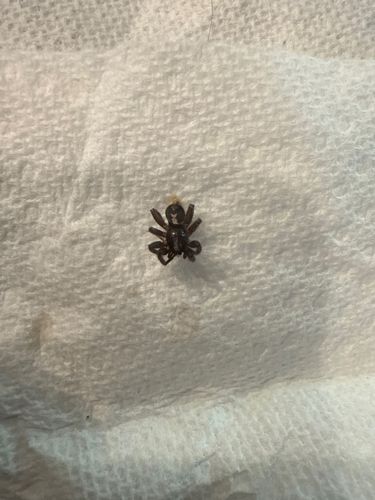Tick
Scientific Name: Ixodida (various species)
Order & Family: Parasitiformes (Order), Ixodidae (Family - hard ticks) or Argasidae (Family - soft ticks)
Size: Unfed adults typically range from 0.08 to 0.6 inches (2 mm to 15 mm). Engorged females can be significantly larger.

Natural Habitat
Grassy areas, wooded areas, shrubs, leaf litter, and on animals (hosts) due to their parasitic nature. They prefer humid environments.
Diet & Feeding
Ticks are obligate hematophagous ectoparasites, meaning they feed exclusively on the blood of vertebrates (mammals, birds, reptiles, amphibians).
Behavior Patterns
Ticks use a strategy called 'questing' where they perch on vegetation with their front legs extended, waiting for a host to pass by. They do not jump or fly. Once on a host, they crawl to a suitable feeding site, embed their mouthparts, and feed for several hours to several days until engorged. They undergo several life stages (egg, larva, nymph, adult), each typically requiring a blood meal.
Risks & Benefits
Risks: Ticks are significant vectors of various diseases to humans and animals, including Lyme disease, Rocky Mountain spotted fever, anaplasmosis, babesiosis, ehrlichiosis, and Powassan virus disease. Their bites can also cause local irritation or allergic reactions. Benefits: As parasites, they have limited direct benefits to humans or ecosystems, though they are a food source for some predatory animals.
Identified on: 9/30/2025